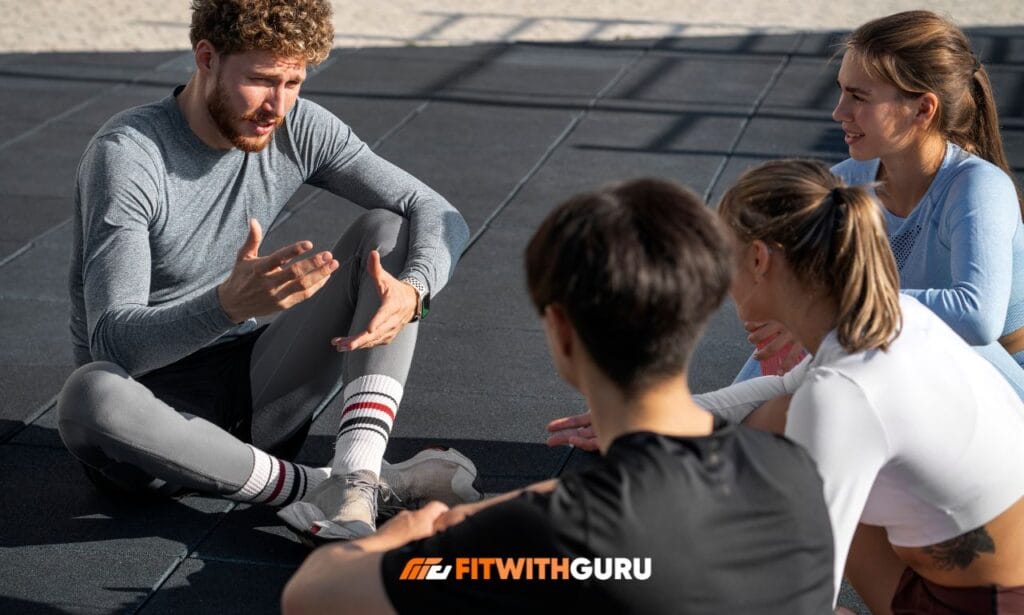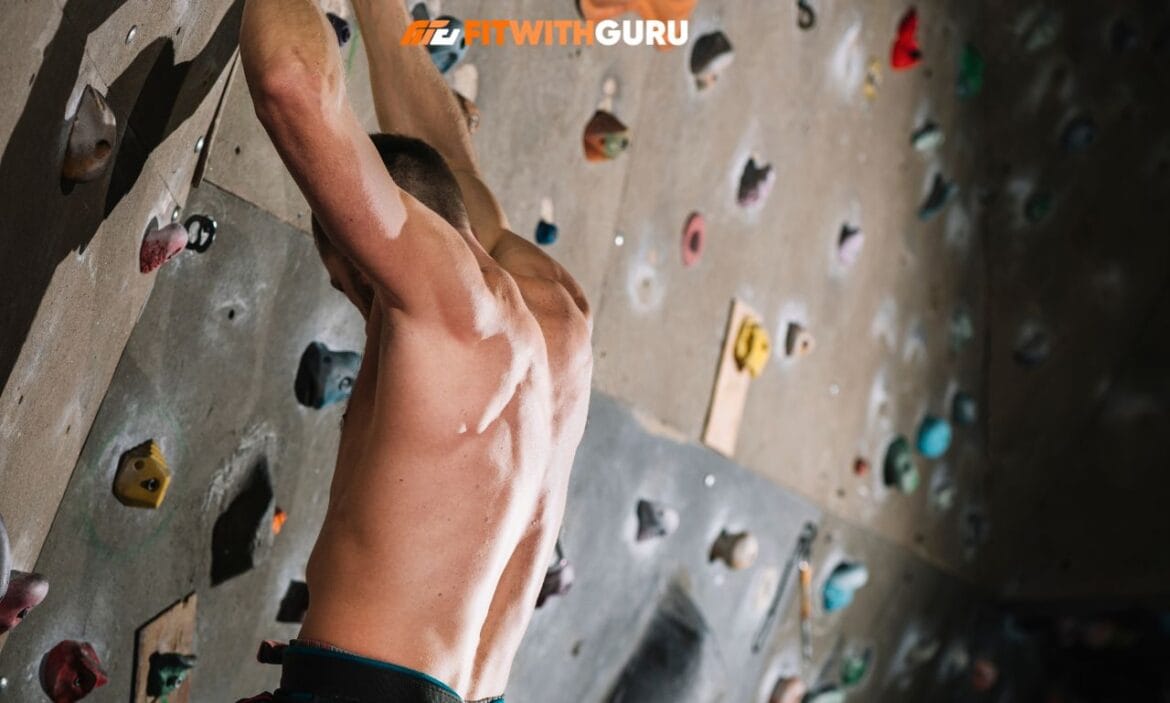Rock climbing grip strength training forms the foundation of every successful climber’s development journey. Whether you’re scaling indoor walls or tackling outdoor crags, your grip strength determines how long you can hold onto those challenging holds and ultimately reach the summit.
Many climbers focus heavily on technique and endurance while neglecting the critical component that connects them to the rock – their grip. This comprehensive guide will transform your understanding of grip strength development and provide you with eight proven strategies that will elevate your climbing performance to new heights.
Understanding Rock Climbing Grip Strength Fundamentals
Rock climbing grip strength training encompasses multiple muscle groups working in harmony to maintain contact with various hold types. Your forearms contain over 20 muscles that contribute to grip strength, including the flexor digitorum profundus, flexor digitorum superficialis, and the often-overlooked intrinsic hand muscles.
Unlike traditional strength training that focuses on isolated movements, climbing grip strength training requires developing functional strength that translates directly to climbing scenarios.
The three primary grip types in climbing – crimp, open hand, and pinch – each demand different muscle activation patterns and training approaches.
The Science Behind Grip Strength Development
Rock climbing grip strength training operates on the principle of progressive overload combined with sport-specific adaptations. Research published in the Journal of Sports Sciences demonstrates that climbers possess significantly greater grip strength than the general population, with elite climbers showing 40-60% higher values.
The neuromuscular adaptations that occur during climbing grip strength training include improved motor unit recruitment, enhanced intermuscular coordination, and increased tendon stiffness.
These adaptations don’t happen overnight – they require consistent, progressive training that challenges your grip in multiple ways. The key lies in understanding that grip strength isn’t just about raw power; it’s about endurance, precision, and the ability to maintain strength under fatigue.
Hangboard Training: The Cornerstone of Rock Climbing Grip Strength Training
Hangboard training represents the most efficient method for developing rock climbing grip strength in a controlled environment.
This systematic approach allows climbers to precisely target specific grip positions while gradually increasing intensity and duration. The beauty of hangboard training lies in its measurability – you can track exact hang times, load increases, and grip position improvements over time.
Professional climbing coaches recommend starting with bodyweight hangs and progressing to weighted hangs as strength improves. A typical rock climbing grip strength training hangboard session might include 7-second hangs with 53-second rest periods, repeated for multiple sets across different grip positions.

Hangboard Protocol Design
Effective rock climbing grip strength training hangboard protocols follow specific parameters that maximize adaptation while minimizing injury risk. Begin each session with a thorough warm-up including arm circles, finger extensions, and easy climbing movements.
The core workout typically consists of maximum hangs (3-7 seconds), repeater protocols (7 seconds on, 3 seconds off), or endurance hangs (15-45 seconds). Advanced climbers incorporate weighted hangs using a harness and weight plates, progressively increasing load by 2.5-5 pounds weekly.
Recovery between sets should equal 2-3 times the work duration, allowing full phosphocreatine system recovery. Track your progress meticulously – record grip type, duration, added weight, and subjective difficulty ratings.
Campus Board Training for Explosive Rock Climbing Grip Strength
Campus board training develops the explosive component of climbing grip strength training that’s essential for dynamic movements.
This training method, developed initially by Wolfgang Güllich, focuses on powerful finger strength and coordination between hands. Campus board practice fosters the quick force output required for dynos and explosive sequences, in contrast to hangboard training, which prioritizes isometric strength.
The progression from assisted campus board movements to full-bodyweight rungs typically takes months of dedicated training. Safety remains paramount during campus board sessions – proper warm-up and gradual progression prevent the finger injuries that sideline many ambitious climbers.
Campus Board Exercise Progressions
Rock climbing grip strength training on campus boards begins with assisted movements using resistance bands or foot support.
The basic ladder exercise involves climbing up the board using only your hands, skipping rungs as strength improves. Bumping exercises require explosive upward movements, catching higher rungs with alternating hands.
Double-dyno movements represent the most advanced campus board exercises, requiring simultaneous release and catch with both hands. Each exercise targets different aspects of explosive grip strength while building the neural pathways essential for dynamic climbing.
Grip Strength Training Tools and Equipment
Today’s rock climbing grip strength training is enhanced by a variety of specialist equipment made to address particular deficiencies.
Grip trainers, stress balls, and resistance putty provide convenient options for maintaining finger strength throughout the day. Adjustable grip strengtheners allow precise resistance control, enabling progressive overload in your daily routine.
The continuous flexion stress from climbing is offset by finger extension bands, which encourage balanced muscle growth. Climbers can monitor their progress and spot hand imbalances by using grip strength meters, which offer objective readings.
Essential Training Equipment Guide
| Equipment Type | Primary Benefit | Training Focus | Price Range |
| Hangboard | Isometric strength | Crimp, open hand, pinch | $50-200 |
| Campus Board | Explosive power | Dynamic movements | $100-300 |
| Grip Trainer | Convenience | Daily maintenance | $10-50 |
| Resistance Bands | Antagonist training | Finger extension | $15-30 |
| Grip Meter | Progress tracking | Objective measurement | $30-100 |
Sport-Specific Climbing Grip Strength Training Exercises
Effective climbing grip strength training incorporates exercises that mirror the specific demands of your climbing style. Bouldering requires short bursts of maximum strength, while sport climbing demands sustained grip endurance over longer sequences.
Traditional climbing often involves holding irregular, natural rock features that challenge grip strength in unpredictable ways. Alpine climbing combines grip strength with the additional challenge of cold conditions and technical gear manipulation.
Bouldering-Specific Grip Training
Rock climbing grip strength training for bouldering emphasizes maximum strength and power development over short durations.
High-intensity hangboard sessions with added weight build the strength needed for V-grade boulder problems. Campus board training perfectly complements bouldering by developing the explosive finger strength required for dynamic sequences.
Limit bouldering sessions serve as sport-specific rock climbing grip strength training, pushing your grip to its absolute limits. Recovery becomes crucial in bouldering-focused training due to the high-intensity nature of the sessions.
Sport Climbing Endurance Protocols
Sport climbing demands rock climbing grip strength trainings that emphasizes endurance over raw power. Repeater protocols on the hangboard build the strength-endurance needed for long, pumpy routes. High-volume, low-intensity climbing sessions develop the aerobic capacity of your forearm muscles.
4×4 boulder pyramid training combines strength and endurance elements while maintaining climbing-specific movement patterns. Arc training involves continuous easy climbing for 20-45 minutes, building the foundation for sustained grip strength.
Recovery and Injury Prevention Strategies
Effective rock climbing grip strength training must balance training stress with adequate recovery to prevent overuse injuries.
The forearms and fingers are particularly susceptible to overuse due to their high training volume and slow recovery rates. Proper nutrition, hydration, and sleep provide the foundation for recovery from intense grip strength training sessions.
Active recovery techniques including massage, stretching, and light movement promote blood flow and tissue health. Understanding the early warning signs of overuse injuries allows climbers to adjust training before minor issues become major problems.

Antagonist Training for Balanced Development
Rock climbing grip strength training creates significant muscle imbalances that require targeted antagonist work to prevent injury.
Finger extension exercises using rubber bands or specialized tools counteract the constant flexion stress from climbing. Wrist extensor strengthening prevents the elbow pain commonly experienced by climbers who neglect antagonist training.
Shoulder stabilization exercises address the postural imbalances created by the forward-reaching nature of climbing movements. Regular antagonist training sessions should comprise 10-15% of your total climbing grip strength training volume.
Advanced Training Techniques and Progressions
Elite-level rock climbing grip strength training incorporates advanced techniques that push the boundaries of human performance.
Isometric holds at various grip positions develop strength at specific joint angles crucial for challenging climbing sequences. Eccentric loading protocols build tendon strength while developing the control needed for precise foot placement.
Frequently Asked Questions
What’s the difference between grip strength and grip endurance training?
climbing grip strength training targets maximum force production, typically using loads above 85% of maximum for short durations.
Grip endurance training focuses on maintaining submaximal forces for extended periods, usually 60-80% intensity for longer durations. Strength protocols use 3-10 second hangs with long rest periods to maximize force development.
Can I overtrain my grip strength?
Rock climbing grip strength training carries a significant overtraining risk due to the slow recovery rate of finger tendons and ligaments. Common symptoms include persistent soreness, decreased performance, and increased injury susceptibility.
Tendons require 36-72 hours for complete recovery after high-intensity grip training sessions.Listen to your body – persistent pain or performance decreases indicate the need for reduced training intensity or complete rest.
What grip position should I prioritize in training?
Rock climbing grip strength training should address all grip positions, but prioritize your weakest areas first. Crimp grip training develops the closed-hand position commonly used on small holds and technical routes. Open hand training builds strength for larger holds and reduces injury risk compared to aggressive crimping.
How long does it take to see improvements in grip strength?
Rock climbing grip strength training produces measurable improvements within 2-4 weeks for beginners. https://workoutplan.info/shoulder-workouts-with-bodyweight/Neurological adaptations account for early strength gains, followed by structural changes after 6-8 weeks of consistent training. Significant performance improvements typically require 8-12 weeks of progressive rock climbing grip strength training.
Conclusion
Rock climbing grip strength training represents the most crucial element in any serious climber’s development program. The eight strategies outlined in this comprehensive guide provide a systematic approach to developing the grip strength needed for climbing success at any level.
From hangboard fundamentals to advanced campus board techniques, each method contributes to building the finger strength that separates good climbers from great ones. Remember that rock climbing grip strength training requires patience, consistency, and respect for recovery to achieve optimal results.

